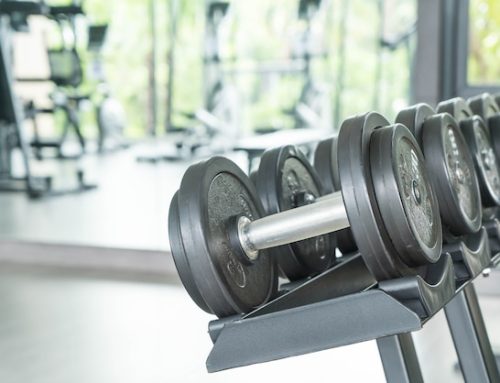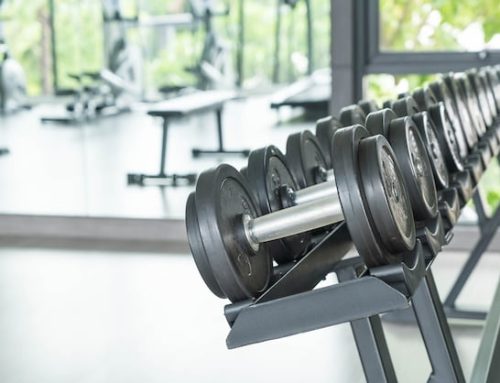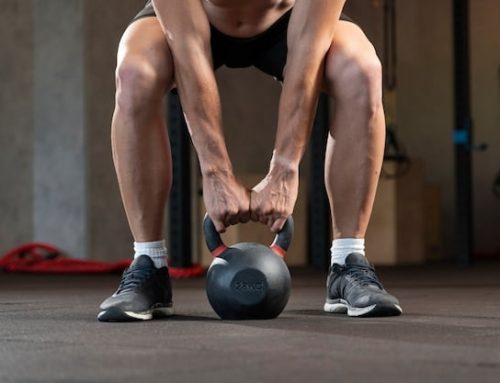Carbohydrates are our body’s favourite fuel source. If we’ve got carbs available, the body will prioritise the use of them for energy when we exercise. But if we’re trying to lose weight, the burning of carbohydrates alone isn’t going to help with fat loss.
So, is there a way to teach your body to burn more fat than carbohydrates when we’re exercising? Dr. Jacob Wilson, an expert in the building of muscle and body composition; and IFBB pro-bodybuilder Ben Pakulski discuss how you can burn more fat for fuel by approaching your diet intelligently.
Ben and Dr. Wilson explain how strategic carbohydrate cycling is going to increase your insulin sensitivity and therefore assist you in optimising how your body burns fat for fuel.
“As soon as I spike my insulin levels (by eating carbohydrates) my body is going to stop burning fat as fuel”.
Ben discusses how he often chooses a high-protein, high-fat breakfast to optimise fat burning, instead of eating carbohydrates. This is down to the fact that eating carbohydrates would trigger an insulin response and limit the burning of fat for fuel throughout the day.
The pair also discuss how someone who relies more on carbs for energy may be at risk of losing muscle mass a lot easier than someone who is adapted to utilising fat for energy when carb sources are low.
If your body hasn’t developed the ability to use fat for fuel efficiently, and you don’t have the stored carbs available that you usually do, your body will simply turn to proteins from your muscles as a source of energy.
How to burn more body fat for fuel:
Eat carbs accordingly. If you don’t have a hard day of training ahead of you, allow your body to go without for the day. This will help your body deplete glycogen stores (from carbohydrates) and return to a state of fat-burning. The increase in insulin sensitivity will result in more efficient use of stored fat, and limit the chances of your body using muscle for energy.
Teaching your body to burn fat for fuel involves adopting certain dietary and lifestyle habits that can help your body shift from relying on glucose (carbohydrates) to burning fat for energy. Here are some tips on how to do that:
- Follow a low-carbohydrate diet: Consuming a diet that is low in carbohydrates and high in healthy fats can help your body switch to using fat as fuel. This is because when you reduce your carbohydrate intake, your body enters a metabolic state called ketosis, where it burns fat for energy instead of glucose.
- Increase your healthy fat intake: Consuming healthy fats such as olive oil, coconut oil, avocado, nuts, and seeds can help your body burn fat for energy. These fats are also important for hormone production and overall health.
- Engage in regular physical activity: Regular exercise can help your body burn fat for energy. Aim for a combination of resistance training and cardiovascular exercise to help build muscle and improve your body’s ability to burn fat.
- Practice intermittent fasting: Intermittent fasting involves periods of eating and fasting, which can help your body become more efficient at burning fat for energy. Consider starting with a 16-hour fasting window and an 8-hour feeding window each day.
- Get enough sleep: Getting enough restful sleep is important for regulating hormones that control metabolism and appetite. Aim for 7-9 hours of sleep each night.
- Stay hydrated: Drinking plenty of water and staying hydrated can help your body burn fat for energy. Dehydration can cause your body to hold onto fat as a protective mechanism.
Remember, shifting to fat burning as a primary source of fuel takes time and dedication. Be patient and consistent with your dietary and lifestyle changes, and listen to your body’s signals along the way.
Fat burning exercises
Here is a table of some exercises that can help you burn fat:
| Exercise | Description | Calories burned (per hour) |
|---|---|---|
| Running | Running is a high-intensity exercise that can burn a significant amount of calories and fat. | 600-1000 |
| Cycling | Cycling is a low-impact exercise that can help you burn fat and improve cardiovascular health. | 400-1000 |
| HIIT | High-intensity interval training (HIIT) involves short bursts of high-intensity exercise followed by rest periods. This type of exercise can help you burn fat and increase muscle mass. | 500-1000 |
| Jumping rope | Jumping rope is a high-intensity exercise that can burn a lot of calories and improve cardiovascular health. | 600-1000 |
| Swimming | Swimming is a low-impact exercise that can help you burn fat and improve cardiovascular health. | 400-700 |
| Resistance training | Resistance training, such as weightlifting or bodyweight exercises, can help you build muscle mass and increase your metabolism, which can lead to fat burning. | 300-600 |
| Rowing | Rowing is a full-body exercise that can burn a significant amount of calories and improve cardiovascular health. | 500-1000 |
Remember, the number of calories burned during exercise can vary depending on a variety of factors, including your weight, age, gender, and intensity level. Also, it’s important to combine exercise with a healthy diet and lifestyle habits to optimize fat burning and weight loss.






